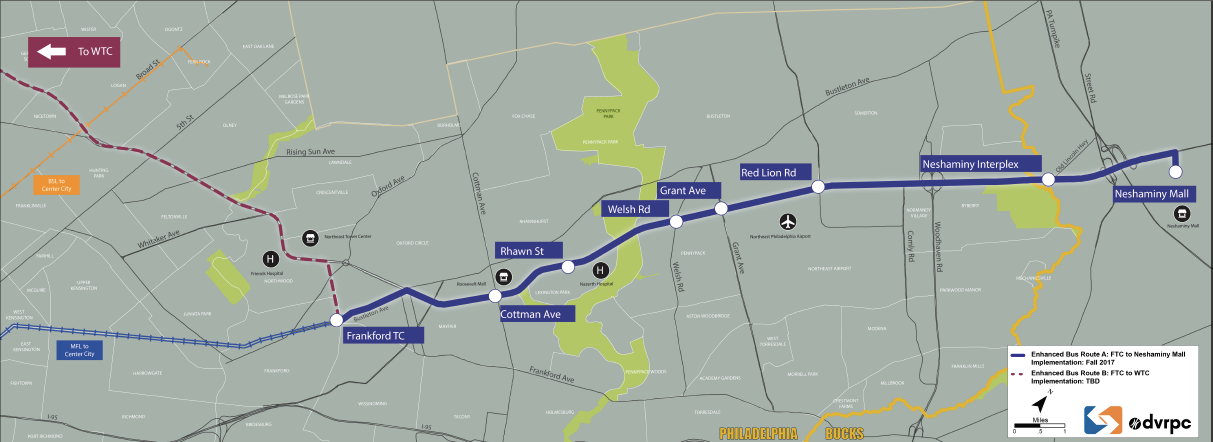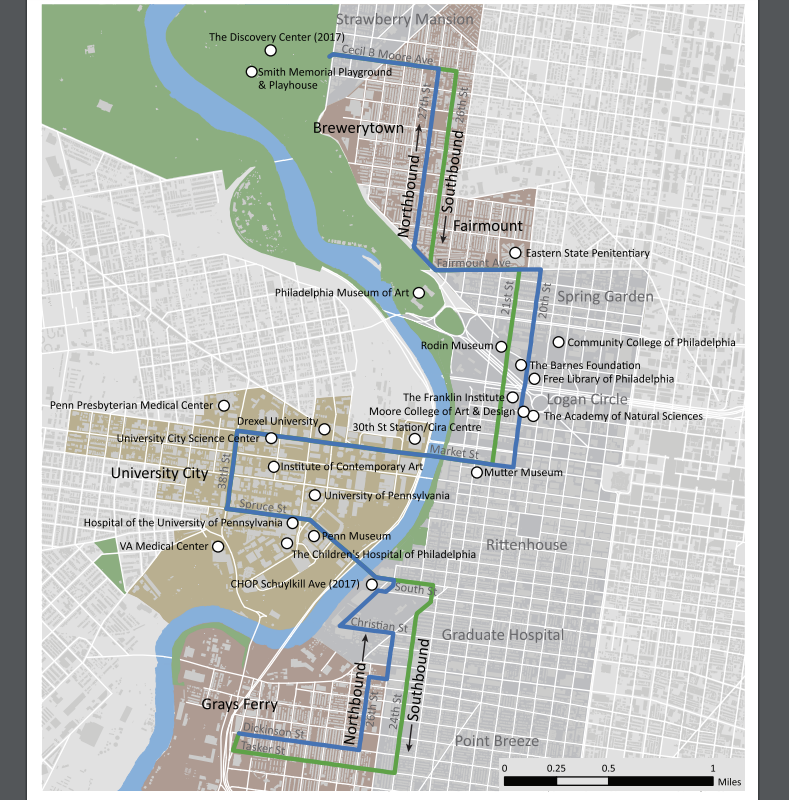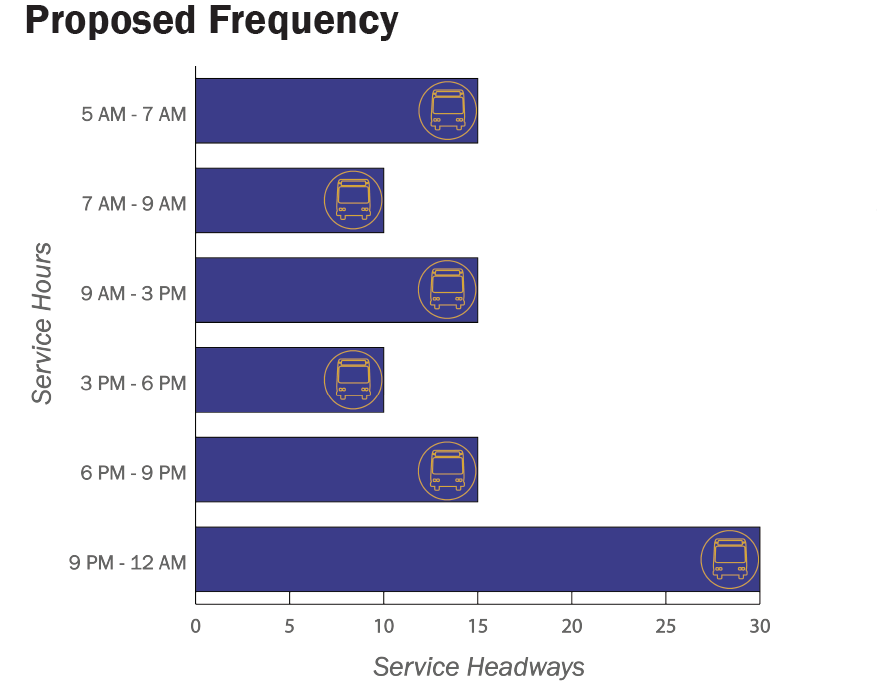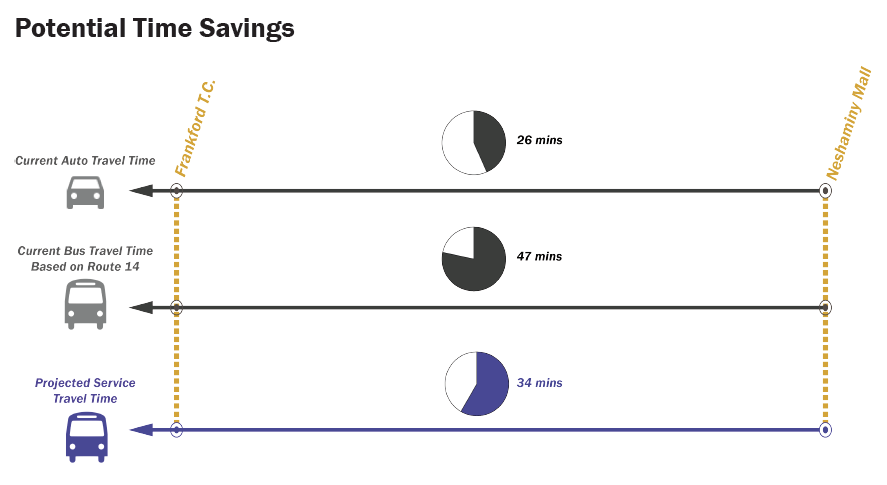Bridled enthusiasm for new bus service proposals around University City and Roosevelt Boulevard

The small crowd that gathered at SEPTA’s headquarters in Center City to get an upclose look at the transit agency’s proposed service changes for next year murmured with cautious excitement Monday afternoon.
This year’s handful of proposals—down from over a dozen last year—were good.
Not great. But pretty good.
The two smallest proposals—extending some buses on Route 2 to stop at Wayne Junction during rush hours and splitting Horsham’s 310 into two loops serving the office parks there— were met with nearly universal approval by the dozen or so transit enthusiasts that attended the noontime feedback session.
The biggest suggestion in this year’s Annual Service Plan would bring an enhanced bus service to Roosevelt Boulevard, which would complement the existing Route 14 bus. This would be the first serious step toward introducing Bus Rapid Transit (BRT) services in Philadelphia.
BRT applies elements of rail service to buses to improve travel speeds. This “BRT-lite” service would stop less frequently—at “stations” with significant shelters, not mere bus stops—use transit signal prioritization, and get special branding. A full BRT would also use dedicated travel lanes and off-board fare collection.
SEPTA’s proposal is almost identical to a plan published by the Delaware Valley Regional Planning Commission (DVRPC) last year—SEPTA’s presentation even used DVRPC’s route map.
The route would run along Roosevelt Boulevard from the Neshaminy Mall in Bucks County to the Frankford Transportation Center with six intermediate stations: Neshaminy Interplex, Red Lion Road, Grant Avenue, Welsh Road, Rhawn Street, and Cottman Avenue. Those eight stops are where 47 percent of the Route 14 bus passengers board and alight, said Dan Nemiroff, SEPTA’s senior operations planner. If you include riders from nearby stops, that number jumps to 65 percent.
Buses would run every 10 minutes during peak times and every 15 minutes during most off-peak hours; that would be slightly less frequent than Philadelphia’s subways. They would run infrequently late at night, and not at all overnight; Route 14 would continue to run then, though. Reducing the number of stops and using transit signal prioritization would speed up the new service compared to Route 14, reducing total travel time along the route from 47 minutes to 33 minutes, which is competitive with the 26 minutes it takes a car to make the same journey.
The new service should help alleviate crowding on the 14 bus and eventually increase ridership, said Nemiroff. That’s welcome news to riders like Chuck Bode.
“The route 14 is hopelessly overcrowded and late most of the time, so they definitely need to do something,” said Bode. “And this looks like a good start.”
The open house attendees’ only complaint over the Boulevard’s proposed BRT-lite: the “lite” part.
“Obviously, it’s BRT-lite: we’d love to see all the elements of BRT going into [the service],” said Nick Rogers. “But I think it’s a tremendous first step.”
Nemiroff said that SEPTA would listen to public feedback about all elements of the proposed service at a series of public forums to be held in April near Roosevelt Boulevard. That would include suggestions for a name for the service, which would get its own specific branding.
When pressed whether he had any favorites name ideas, Nemiroff admitted, “We have people that like the Noreaster.” He then added that SEPTA was working with the city and outside consultants on all aspects of the project, including the name.
CROWD: THIS 49 HASN’T STRUCK GOLD JUST YET
As currently proposed, the new Route 49 bus would run from Brewerytown through Fairmount to the Benjamin Franklin Parkway, crossing the Schuylkill River at Market Street to 30th Street Station, then running west through University City. The line would then turn back, cross the river again at South Street, and turn south to reach Point Breeze and Grays Ferry.
University City has grown as an employment hub in recent years and shows no sign of stopping. University City District data showed lots of employees living in and around Brewerytown, Fairmount, and Grays Ferry. Surprisingly, there are no single-seat rides between University City and those neighborhoods, a gap Route 49 would fill. Perhaps more surprisingly, there are no single-seat bus rides linking 30th Street Station with the Ben Franklin Parkway and all the museums there — Route 49 would fix that, too.

Unlike Roosevelt Boulevard BRT-lite, not everyone was entirely pleased with the proposal. Michael Noda, who runs the Sic Transit Philadelphia blog, described the Route 49 proposal as “so close, yet so far.” Noda felt that the suggested route would be too circuitous: instead of going over the Spring Garden Street Bridge, it crosses at Market Street, adding a lengthy leg through Logan Square and Center City West. Similarly, to the south, the bus would cross at the South Street Bridge instead of using the University Avenue/34th Street Bridge or Grays Ferry Avenue Bridge. That not only adds a time-costly leg through Graduate Hospital, where University City-bound riders can easily catch the 40 bus or even walk, it also means that the new 49 route would not run by the University of Pennsylvania’s new innovation center, Pennovation Works.
Doug Diehl said that he would have preferred extending Route 29, which currently links Grays Ferry with Pennsport via Tasker and Morris Streets, over the Schuylkill and into University City.
Despite the criticism, attendees all seemed to agree that Route 49 would fill a big void in SEPTA’s bus network.
WHYY is your source for fact-based, in-depth journalism and information. As a nonprofit organization, we rely on financial support from readers like you. Please give today.





